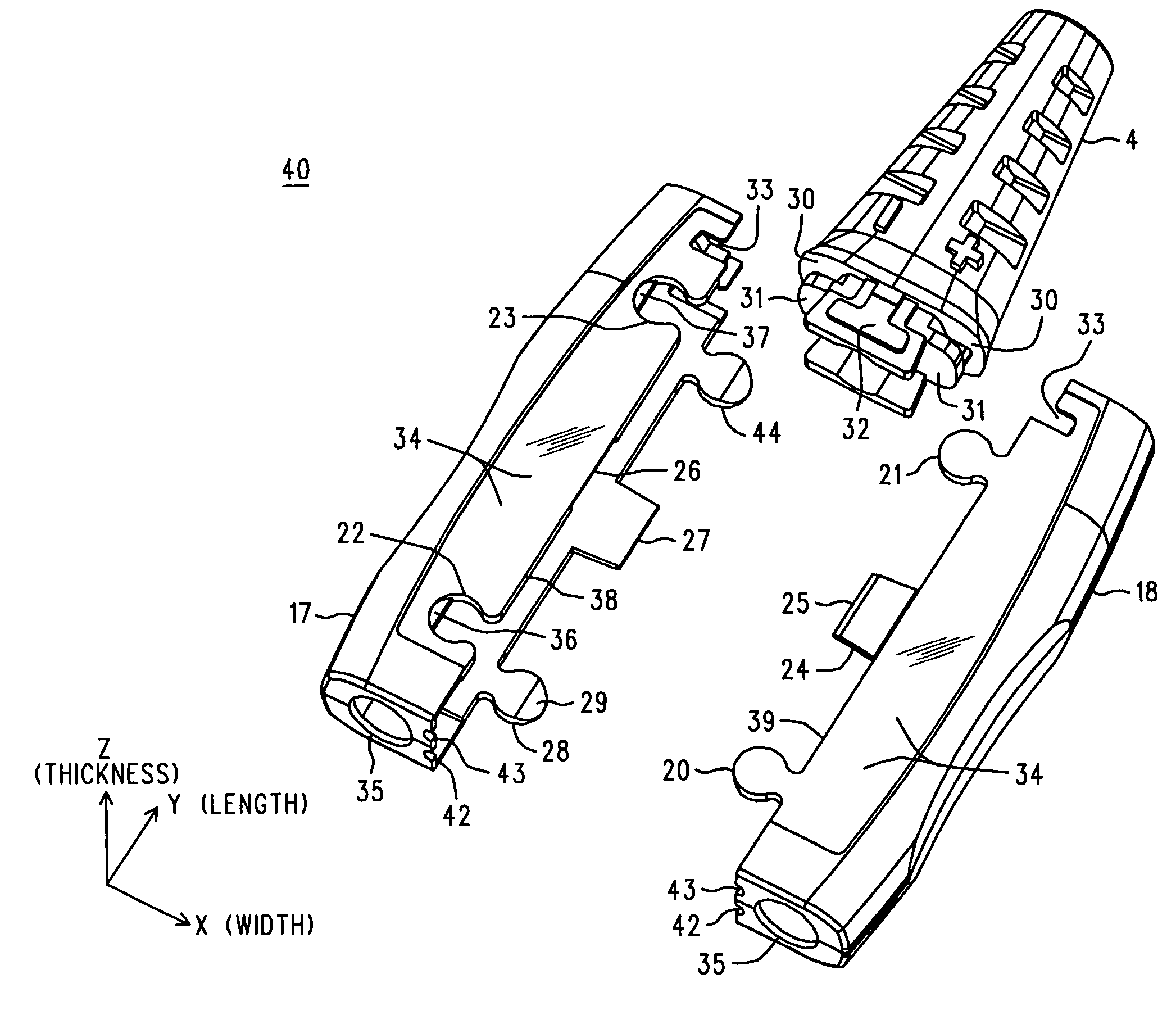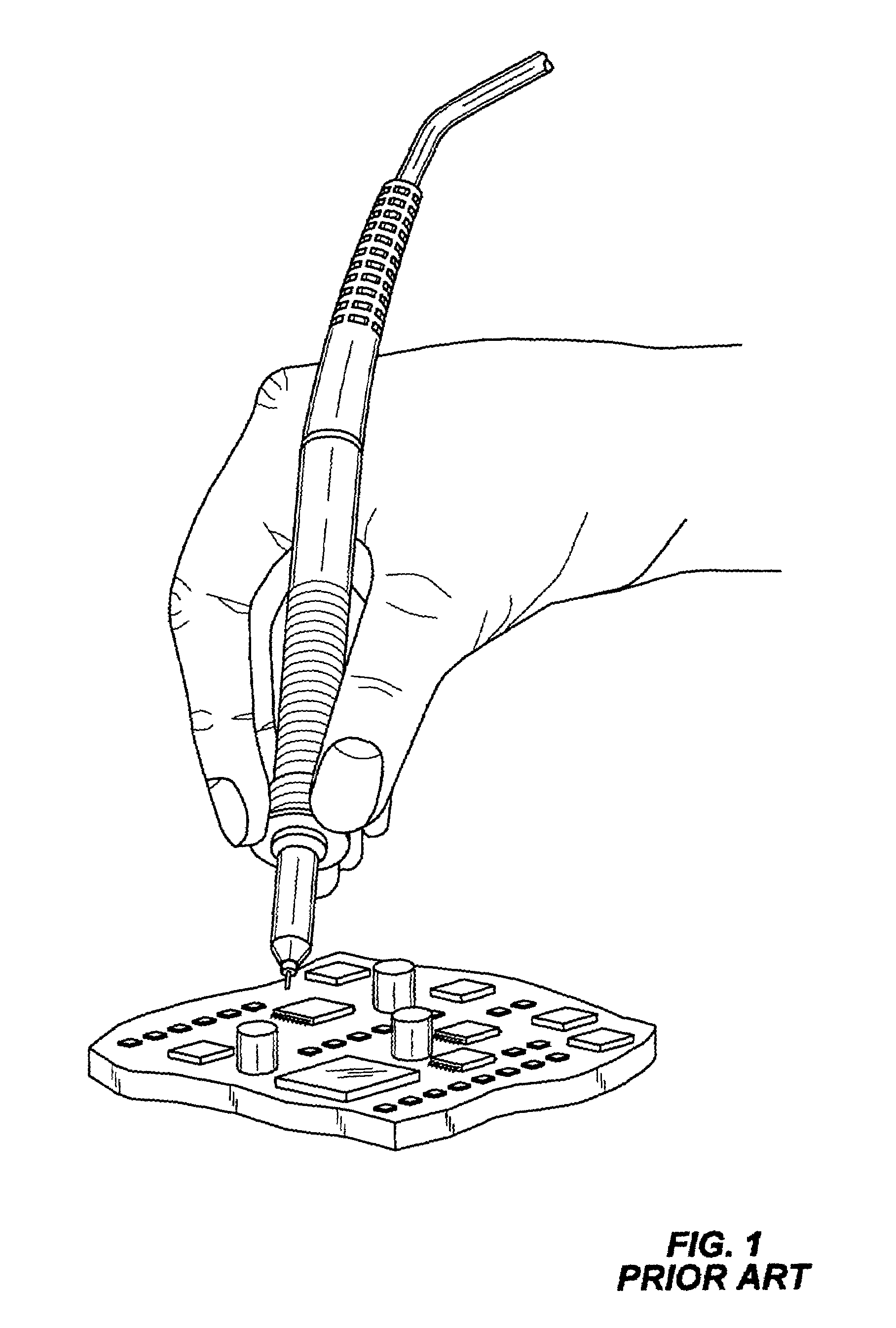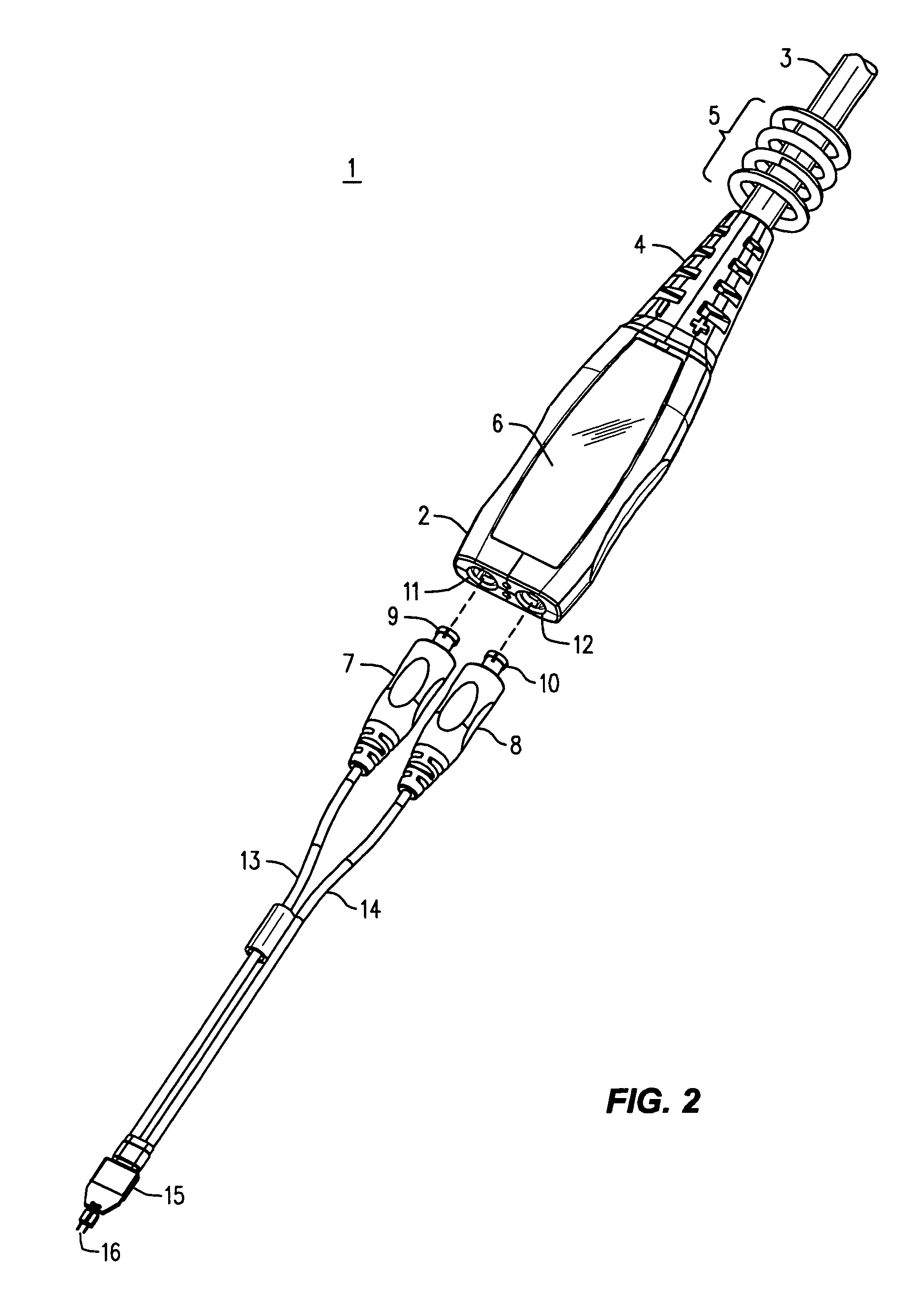Housing for a thin active probe
a technology of active probes and housings, which is applied in the direction of coupling device connections, instruments, diagnostic recording/measuring, etc., can solve the problems of small power dissipation of probes, relatively high cost, and simple inability to fit probes into the available space, etc., and achieves high aspect ratio of width and use. , the effect of high aspect ratio
- Summary
- Abstract
- Description
- Claims
- Application Information
AI Technical Summary
Benefits of technology
Problems solved by technology
Method used
Image
Examples
Embodiment Construction
[0018]Refer now to FIG. 2, wherein is shown a partially exploded perspective view 1 of a thin active probe. The probe 2 has internal workings that are to be covered and protected by an outer housing that also anchors a strain relief (or boot) 4 for a cable 3. The cable leads to the instrument or item of test equipment (not shown) that the active probe is associated with. Since there may be several such probes in use at the same time, a collection 5 of removable colored elastic bands is provided to allow easy identification among the probes.
[0019]The body of the probe 2 has two relatively broad and flat recessed surfaces, the top-most one of which is visible (the other is parallel to it but on the underside) and that each receive an adhesive label (6 is one), such as metal foil embossed or printed with appropriate indicia.
[0020]At the front of the probe body 2 are two apertures 11 and 12. They allow access by plugs 9 and 10 to respective sockets within the probe body 2; those sockets...
PUM
 Login to View More
Login to View More Abstract
Description
Claims
Application Information
 Login to View More
Login to View More - R&D
- Intellectual Property
- Life Sciences
- Materials
- Tech Scout
- Unparalleled Data Quality
- Higher Quality Content
- 60% Fewer Hallucinations
Browse by: Latest US Patents, China's latest patents, Technical Efficacy Thesaurus, Application Domain, Technology Topic, Popular Technical Reports.
© 2025 PatSnap. All rights reserved.Legal|Privacy policy|Modern Slavery Act Transparency Statement|Sitemap|About US| Contact US: help@patsnap.com



